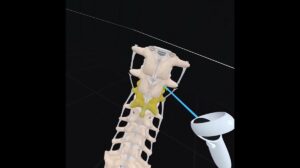NEW YORK (Reuters Health) – Adding the investigational agent perampanel to concomitant antiepilepsy therapy reduces seizure frequency in patients with refractory partial-onset seizures, according to the results of a phase III clinical trial.
“The data also support the hypothesis that direct targeting of glutamatergic neurotransmission using AMPA-receptor antagonism is a valid approach for treating seizures,” Dr. Gregory L. Krauss at Johns Hopkins University in Baltimore, Maryland, and colleagues comment in their report in Neurology online April 18.
The multicenter team explains that AMPA receptor hypersensitivity and increased glutamate binding sites have been documented in regions of the brains of epileptics, and that AMPA receptors are primary modulators of seizure spread. Perampanel is a highly selective AMPA-type glutamate receptor antagonist.
The current study involved 706 patients with persistent partial-onset seizures despite treatment with from 1 to 3 antiepileptic drugs. They were randomized to receive adjunctive placebo or perampanel at 2, 4 or 8 mg/day for 13 weeks.
The median change in seizure frequency from baseline in the four arms was -10.7%, -13.6%, -23.3%, and -30.8%, respectively, the investigators report. The differences between the placebo group and the groups receiving the two higher doses of perampanel were significant.
The tolerability profile was generally favorable, the authors report, and the most frequent treatment-emergent adverse event was dizziness.
While this study defined the minimum effective perampanel as 4 mg/day, two recently completed trials are investigating 8 mg/day and 12 mg/day doses of perampanel, Dr. Krauss and colleagues note.
They conclude, “The utility of this novel, selective, noncompetitive AMPA-type glutamate receptor in the adjunctive treatment of uncontrolled partial-onset seizures is promising given the treatment-resistant nature of this study population.”
SOURCE:
Randomized phase III study 306: adjunctive perampanel for refractory partial-onset seizures




